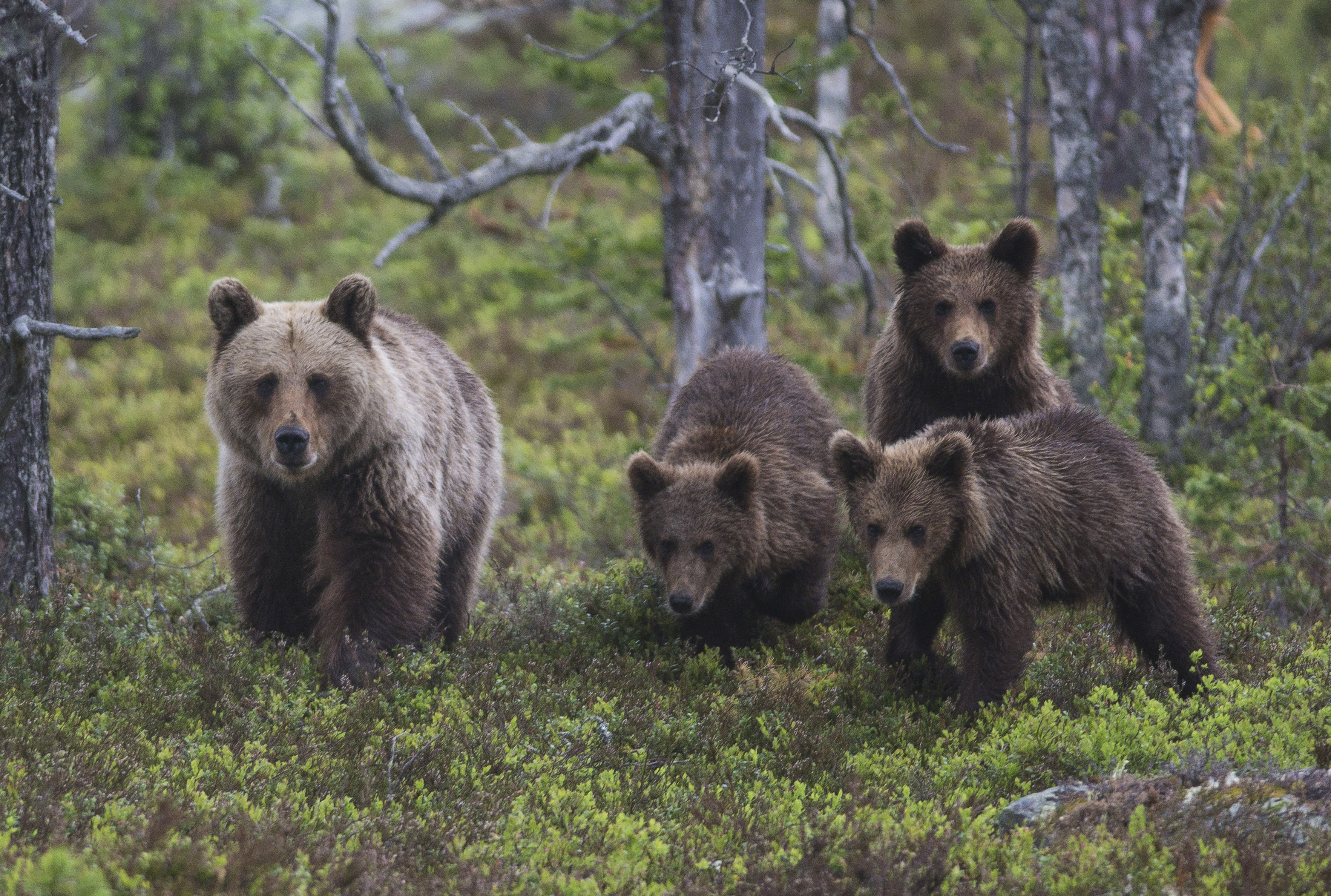Carnivore Comeback: Bears and Wolves Are Thriving in Europe

Despite having half the land area of the contiguous United States and double the population density, Europe is home to twice as many wolves as the U.S.
A new study finds that Europe's other large carnivores are experiencing a resurgence in their numbers, too — and mostly in nonprotected areas where the animals coexist alongside humans. The success is owed to cross-border cooperation, strong regulations and a public attitude that brings wildlife into the fold with human society, rather than banishing it to the wilderness, according to study leader Guillaume Chapron, a professor at the Swedish University of Agricultural Sciences' Grimsö Wildlife Research Station.
In Europe, "we don't have unspoiled, untouched areas," Chapron told Live Science. "But what is interesting is, that does not mean we do not have carnivores. Au contraire; we have many carnivores." [Images: Carnivores of Europe]
Europe's carnivores bounce back
Chapron and his colleagues pulled together data from all over Europe — excluding Russia, Ukraine and Belarus — on the population numbers of brown bears (Ursus arctos), Eurasian lynx (Lynx lynx), wolverines (Gulo gulo) and gray wolves (Canis lupus). Their results, published today (Dec. 18) in the journal Science, reveal that large carnivores in Europe are doing very well.
With the exception of Belgium, Denmark, the Netherlands and Luxembourg, every European country in the study has a permanent and reproducing population of at least one of the four large carnivores, the researchers reported. The continent is home to 17,000 brown bears in 10 populations spread over 22 countries. There are 9,000 lynx in 11 populations in 23 countries. Wolves are thriving, with more than 12,000 individuals found in 10 populations in 28 countries.
Wolverines can live only in the cold climates of Scandinavia, so Norway, Sweden and Finland are the only countries in the study that host all four of Europe's major large carnivore species. There are two populations of wolverines in Europe, with an estimated total of 1,250 individuals. (However, wolverines do face threats from climate change, due to their cold-dependent lifestyles.)
Get the world’s most fascinating discoveries delivered straight to your inbox.
Some small populations of carnivores are in decline across Europe, the researchers noted, but none of the large to medium populations are suffering.
Attitudes toward the wild
What makes this success so surprising is that these wolves, bears, lynx and wolverines are surviving largely outside of protected areas.
"Maybe the wolf is your black bear," Chapron said, explaining European attitudes toward the animal. In the United States, he said, wolves are seen as animals that can't coexist with humans, whereas black bears are generally tolerated in residential areas, with locals making accommodations such as bear-proof trash cans.
Chapron acknowledged that there are clashes in Europe between carnivores and people, particularly around livestock farming. Traditional strategies — such as employing livestock-guarding dogs or shepherds, or corralling livestock in pens at night — help ease carnivore attacks on valuable livestock, and compensating farmers for losses can also help mitigate problems, he said.
"There is a need to keep the conflict at a low intensity," Chapron said.
Chapron also credited the Habitats Directive, a set of conservation regulations that protects species and habitat types across national borders, for keeping carnivores from decline and extinction.
"We have found a recipe that works," he said.
Whether a similar recipe could work in the United States depends on public attitudes. However, the European model clearly shows that large carnivores can coexist with people in places Americans tend to find unimaginable, Chapron said. In 2011, a male gray wolf traveled from Oregon to California, becoming the first wolf in the state since 1924. (He later trotted back across the border to Oregon, and fathered pups.)
The appearance of the wolf triggered debate over how to manage the return of wolves in California. That is a matter of public policy, but Chapron pointed out that there is a fast-growing wolf population in Germany and Poland, where roads are as dense as anywhere in the world.
"If people from California decide to have wolves," he said, "then the European model clearly shows that you can have plenty of wolves in California."
Follow Stephanie Pappas on Twitter. Follow us @livescience, Facebook & Google+. Original article on Live Science.

Stephanie Pappas is a contributing writer for Live Science, covering topics ranging from geoscience to archaeology to the human brain and behavior. She was previously a senior writer for Live Science but is now a freelancer based in Denver, Colorado, and regularly contributes to Scientific American and The Monitor, the monthly magazine of the American Psychological Association. Stephanie received a bachelor's degree in psychology from the University of South Carolina and a graduate certificate in science communication from the University of California, Santa Cruz.


